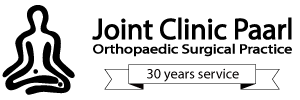The aim is to repair articular cartilage whilst keeping options open for alternative treatments in the future. Broadly taken, there are five major types of articular cartilage repair:
-
- Arthroscopic lavage / debridement
- Marrow stimulation techniques (microfracture surgery and others)
- Marrow stimulation augmented with hydrogel implant
- Marrow stimulation augmented with peripheral blood stem cells
- Osteochondral autografts and allografts
- Cell-based repairs
- Autologous mesenchymal stem cell transplant
Treatment of surface chondral lesions with ACI
Following diagnostic arthroscopy and defect evaluation, chondrocyte harvest can be undertaken. Biopsy 2 large, “tic-tac”-sized, full-thickness samples (5 x 8 mm) from an area of minimal weight-bearing articular cartilage, usually the intercondylar notch. Harvest approximately 200 to 300 mg of chondrocytes and send them to the lab to be cultured and processed in preparation for reimplantation. The remainder of the knee, including both menisci must also be evaluated arthroscopically.
If after arthroscopic evaluation, it was determined that the patient should undergo a autologous chondrocyte implantation procedure the chondrocyte harvest can be undertaken. Biopsy a large, “tic-tac”-sized, full-thickness sample (5 x 8 mm) from an area of minimal weight-bearing articular cartilage, usually the intercondylar notch. Harvest approximately 200 to 300 mg of chondrocytes and send them to the lab to be cultured and processed in preparation for reimplantation.
During the second, implantation stage, make a mini-arthrotomy, taking care to protect the native articular cartilage and meniscus. After exposure, prepare the defect to a stable vertical rim. Size the defect with a ruler and outline it using sterile glove paper. Use this tracing as a template to create a correctly sized collagen membrane patch to cover the defect. Use of a collagen patch (Biogide; Geistlich, Germany) currently represents an FDA of-label use. Cut this patch to size using the previously made template and then allow the patch to soak in a vial of harvested cartilage cells, mimicking “3rd generation” ACI technique. Then sew this collagen membrane over the defect using 6-0 vicryl suture. Ensure a watertight seal with a saline injection trial: Use a sterile angiocath to introduce a small amount of sterile saline underneath the patch. Reinforce any leaks with additional suture. Remove the saline from the defect and inject the chondrocytes underneath the patch. Use the 6-0 vicryl suture to sew shut the injection site underneath the patch and then reinforce the entire patch with fibringlue around the periphery.
Postoperative Care
Immediately following the procedure, place the patient in a hinged knee brace locked in extension for 24 hours to allow the implanted cells to adhere and remain underneath the patch. The patient should be made non-weight-bearing during this time period. After 24 hours, gentle range of motion (ROM) with a continuous passive motion (CPM) machine is initiated from 0° to 30°. CPM use is encouraged for roughly 6 hours per day for the first 6 weeks,with a 5° to 10° increase in range of motion daily. By 4 weeks, there should be at least 90° of flexion and 120° to 130° by week 6. Gentle passive ROM promotes difusion and movement of synovial fluid.
Discussion
Several studies in the orthopaedic literature have demonstrated successful results, both short- and long-term, using ACI. Peterson et al demonstrated roughly 80% good to excellent results at both 2-year and long-term (5 to 11 years) follow up. Minas et al similarly demonstrated an 87% success rate in 169 patients with a minimum of 1 year of follow-up. An additional study in Sweden had long-term follow-up of 10 to 20 years and showed patient satisfaction rates as high as 92%, with over 75% of patients saying they would undergo the procedure again.
Although the studies mentioned above were done in the general population, the results of ACI appear to be just as promising in athletes. A more recent study comparing ACI with microfracture, another common cartilage repair procedure, confirmed the durability and positive long-term results of ACI, versus microfracturing even in athletes.

